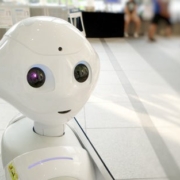Machine vision, or computer vision, is a popular research topic in artificial intelligence (AI) that has been around for many years. However, machine vision still remains as one of the biggest challenges in AI. In this article, we will explore the use of deep neural networks to address some of the fundamental challenges of computer vision. In particular, we will be looking at applications such as network compression, fine-grained image classification, captioning, texture synthesis, image search, and object tracking.
Network Compression
Even though deep neural networks feature incredible performance, their demands for computing power and storage pose a significant challenge to their deployment in actual application. Research shows that the parameters used in a neural network can be hugely redundant. Therefore, a lot of work is put into increasing accuracy while also decreasing the complexity of the network.








 Computers today can not only automatically classify photos, but they can also describe the various elements in pictures and write short sentences describing each segment with proper English grammar. This is done by the Deep Learning Network (CNN), which actually learns patterns that naturally occur in photos.
Computers today can not only automatically classify photos, but they can also describe the various elements in pictures and write short sentences describing each segment with proper English grammar. This is done by the Deep Learning Network (CNN), which actually learns patterns that naturally occur in photos. 


